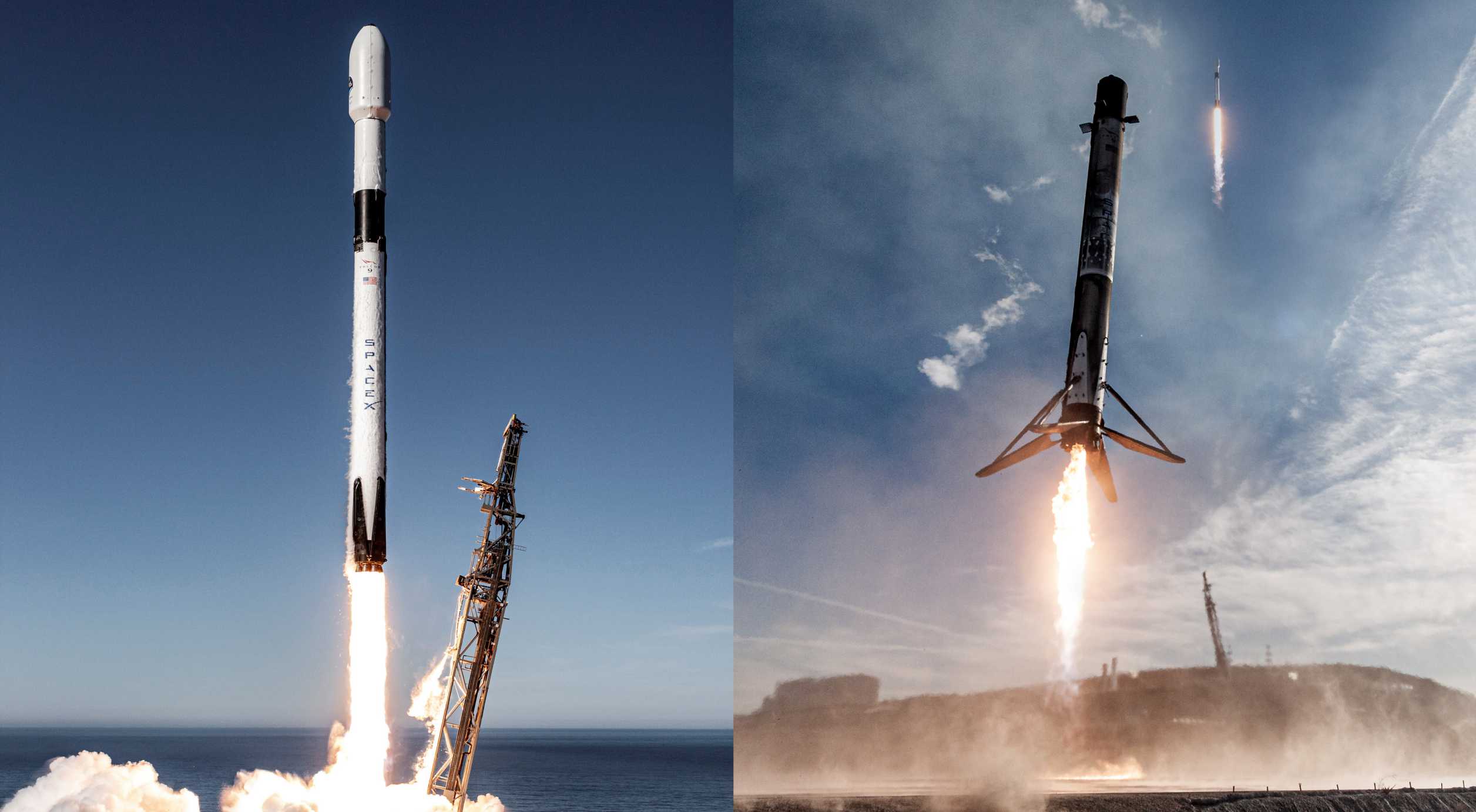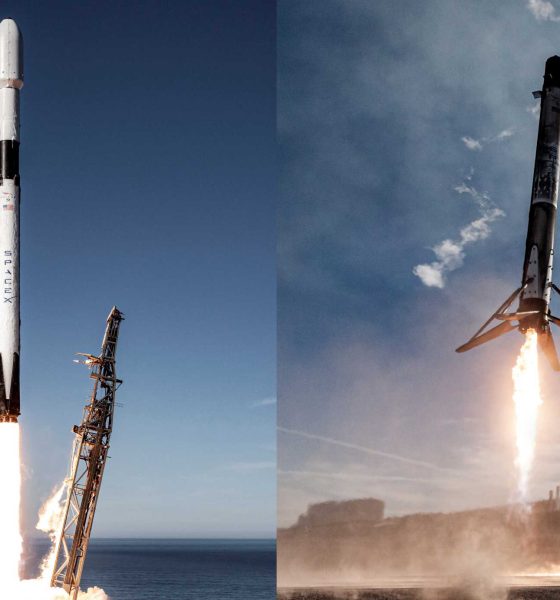

News
SpaceX fires up Falcon 9 rocket for fifth Starlink launch in four weeks
SpaceX has static-fired a flight-proven Falcon 9 booster for what will be the company’s fifth Starlink launch in four weeks.
Set to be the company’s 28th operational launch of Starlink v1.0 satellites and 30th Starlink launch overall, the mission – known as Starlink L28 or Starlink-28 – is scheduled to launch no earlier than (NET) 2:59 pm EDT (18:59 UTC) on Wednesday, May 26th, less than 11 days after Starlink-26. The mission will be SpaceX’s fifth Starlink launch in 29 days and sixth launch in less than five weeks – not including Starship SN15’s successful suborbital launch and landing on May 5th.
As previously discussed on Teslarati, Starlink-28’s successful launch would leave SpaceX just two flights away from a truly remarkable feat of sustained launch cadence.
“If the weather, space station, and SpaceX’s rockets, spacecraft, and pad facilities cooperate, the completion of those three upcoming missions would mark eight successful Falcon 9 launches – carrying two Dragon spacecraft, four astronauts, and almost 300 satellites to orbit – in less than six weeks (41 days). If SpaceX manages that feat and averages one launch every five days, the company will have completed ~45% of its 2021 launches in ~26% of the year to date – a clear pattern of acceleration.”
Teslarati.com – 16 May 2021
Starlink-28 is set to reuse Falcon 9 B1063 after the booster debuted on SpaceX’s West Coast Vandenberg Air Force Base (VAFB) launch site. Some degree of processing was completed at the pad’s facilities before the once-flown rocket was shipped from California to Florida in March 2021. When B1063 arrived, it appeared to be missing several of its Merlin 1D engines, which helps to explain why SpaceX chose to perform an increasingly rare static fire test with a flight-proven booster.
The unusual six-month gap between B1063’s first and second flights can likely be explained by the fact that the booster was at one point expected to stay in California to launch another mission for NASA as early as July 2021. In February 2021, NASA announced that the Double Asteroid Redirect Test – DART – mission’s launch had been delayed by spacecraft issues to a secondary window beginning in late November, which is likely why B1063 headed to Florida a few weeks later.
According to comments made by SpaceX President and COO Gwynne Shotwell just last month, Starlink-28’s successful completion could leave the company with enough satellites for “full [global] connectivity.” Around a third of those Starlink satellites will still need to boost themselves into operational orbits before that (mostly) uninterrupted global coverage can be realized, but it will just be a matter of time once the spacecraft are already in orbit. True global coverage will require a number of dedicated polar launches, but those West Coast Starlink missions could begin as soon as this summer.
Following Starlink-28, SpaceX has two more launches scheduled within eight days of the mission – an SXM-8 radio satellite mission on June 1st and Cargo Dragon 2’s second space station resupply run on June 3rd. Beyond those three launches, SpaceX has at least two or three more missions nominally scheduled in June.

News
Tesla Model 3 becomes Netherlands’ best-selling used EV in 2025
More than one in ten second-hand electric cars sold in the country last year was a Tesla Model 3.

The Tesla Model 3 became the most popular used electric car in the Netherlands in 2025, cementing its dominance well beyond the country’s new-car market.
After years at the top of Dutch EV sales charts, the Model 3 now leads the country’s second-hand EV market by a wide margin, as record used-car purchases pushed electric vehicles further into the mainstream.
Model 3 takes a commanding lead
The Netherlands recorded more than 2.1 million used car sales last year, the highest level on record. Of those, roughly 4.8%, or about 102,000 vehicles, were electric. Within that growing segment, the Tesla Model 3 stood far ahead of its competitors.
In 2025 alone, 11,338 used Model 3s changed hands, giving the car an 11.1% share of the country’s entire used EV market. That means more than one in ten second-hand electric cars sold in the country last year was a Tesla Model 3, Auto Week Netherlands reported. The scale of its lead is striking: the gap between the Model 3 and the second-place finisher, the Volkswagen ID3, is more than 6,700 vehicles.
Rivals trail as residual values shape rankings
The Volkswagen ID.3 ranked a distant second, with 4,595 used units sold and a 4.5% market share. Close behind was the Audi e-tron, which placed third with 4,236 registrations. As noted by Auto Week Netherlands, relatively low residual values likely boosted the e-tron’s appeal in the used market, despite its higher original price.
Other strong performers included the Kia Niro, the Tesla Model Y, and the Hyundai Kona, highlighting continued demand for compact and midsize electric vehicles with proven range and reliability. No other model, however, came close to matching the Model 3’s scale or market presence.
News
Tesla Model Y Standard Long Range RWD launches in Europe
The update was announced by Tesla Europe & Middle East in a post on its official social media account on X.

Tesla has expanded the Model Y lineup in Europe with the introduction of the Standard Long Range RWD variant, which offers an impressive 657 km of WLTP range.
The update was announced by Tesla Europe & Middle East in a post on its official social media account on X.
Model Y Standard Long Range RWD Details
Tesla Europe & Middle East highlighted some of the Model Y Standard Long Range RWD’s most notable specs, from its 657 km of WLTP range to its 2,118 liters of cargo volume. More importantly, Tesla also noted that the newly released variant only consumes 12.7 kWh per 100 km, making it the most efficient Model Y to date.
The Model Y Standard provides a lower entry point for consumers who wish to enter the Tesla ecosystem at the lowest possible price. While the Model 3 Standard is still more affordable, some consumers might prefer the Model Y Standard due to its larger size and crossover form factor. The fact that the Model Y Standard is equipped with Tesla’s AI4 computer also makes it ready for FSD’s eventual rollout to the region.
Top Gear’s Model Y Standard review
Top Gear‘s recent review of the Tesla Model Y Standard highlighted some of the vehicle’s most notable features, such as its impressive real-world range, stellar infotainment system, and spacious interior. As per the publication, the Model Y Standard still retains a lot of what makes Tesla’s vehicles well-rounded, even if it’s been equipped with a simplified interior.
Top Gear compared the Model Y Standard to its rivals in the same segment. “The introduction of the Standard trim brings the Model Y in line with the entry price of most of its closest competition. In fact, it’s actually cheaper than a Peugeot e-3008 and costs £5k less than an entry-level Audi Q4 e-tron. It also makes the Ford Mustang Mach-E look a little short with its higher entry price and worse range,” the publication wrote.
Elon Musk
Elon Musk’s xAI bets $20B on Mississippi with 2GW AI data center project
The project is expected to create hundreds of permanent jobs, dramatically expand xAI’s computing capacity, and further cement the Mid-South as a growing hub for AI infrastructure.

Elon Musk’s xAI plans to pour more than $20 billion into a massive new data center campus in Southaven, Mississippi, marking the largest single economic development project in the state’s history.
The project is expected to create hundreds of permanent jobs, dramatically expand xAI’s computing capacity, and further cement the Mid-South as a growing hub for AI infrastructure.
xAI goes MACROHARDRR in Mississippi
xAI has acquired and is retrofitting an existing facility in Southaven to serve as a new data center, which will be known as “MACROHARDRR.” The site sits near a recently acquired power plant and close to one of xAI’s existing data centers in Tennessee, creating a regional cluster designed to support large-scale AI training and inference.
Once completed, the Southaven facility is expected to push the company’s total computing capacity to nearly 2 GW, placing it among the most powerful AI compute installations globally. The data center is scheduled to begin operations in February 2026.
Gov. Tate Reeves shared his optimism about the project in a press release. “This record-shattering $20 billion investment is an amazing start to what is sure to be another incredible year for economic development in Mississippi. Today, Elon Musk is bringing xAI to DeSoto County, a project that will transform the region and bring amazing opportunities to its residents for generations. This is the largest economic development project in Mississippi’s history,” he said.
xAI’s broader AI ambitions
To secure the investment, the Mississippi Development Authority approved xAI for its Data Center Incentive program, which provides sales and use tax exemptions on eligible computing hardware and software. The City of Southaven and DeSoto County are also supporting the project through fee-in-lieu agreements aimed at accelerating development timelines and reducing upfront costs.
Founded in 2023 by Elon Musk, xAI develops advanced artificial intelligence systems focused on large-scale reasoning and generative applications. Its flagship product, Grok, is integrated with the social media platform X, alongside a growing suite of APIs for image generation, voice, and autonomous agents, including offerings tailored for government use.
Elon Musk highlighted xAi’s growth and momentum in a comment about the matter. “xAI is scaling at an immeasurable pace — we are building our third massive data center in the greater Memphis area. MACROHARDRR pushes our Colossus training compute to ~2GW – by far the most powerful AI system on Earth. This is insane execution speed by xAI and the state of Mississippi. We are grateful to Governor Reeves for his support of building xAI at warp speed,” Musk said.








